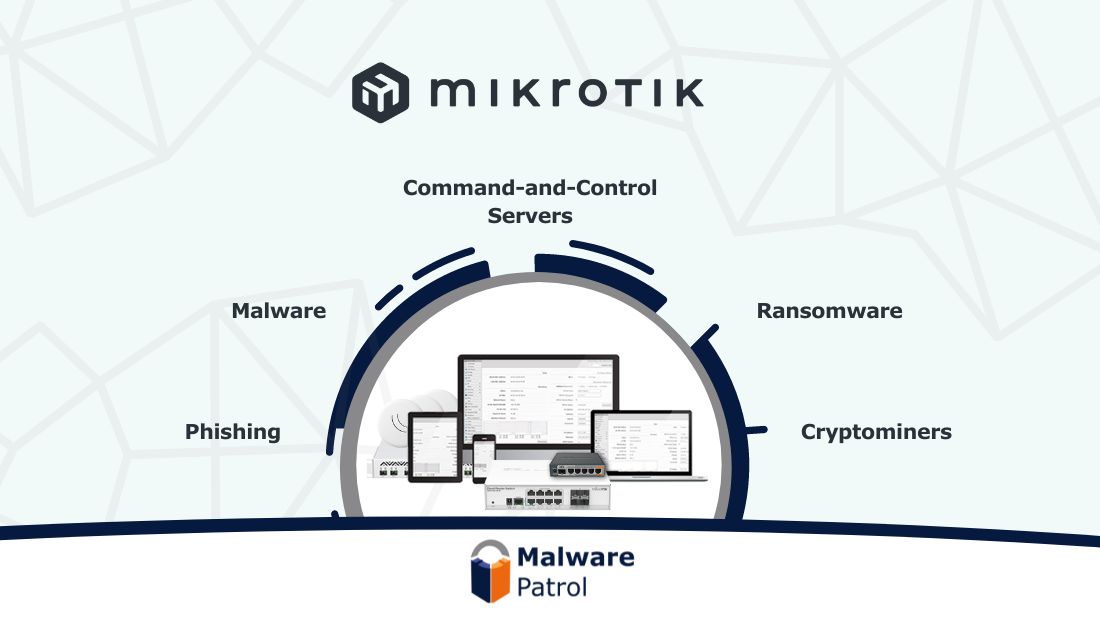MALWARE PATROL FOR MIKROTIK
Comprehensive Protection with MikroTik-Ready Threat Feeds
Boost your MikroTik device defenses with Malware Patrol’s highly actionable threat intelligence feeds, each designed to counter today’s most persistent and evasive cyber threats. By layering these feeds, you gain a robust security posture that intercepts malicious activity at multiple points of the attack chain, before it can impact your network.
Feed options:
1. Malicious Domains: Safeguard users from connecting to sites linked to malware, ransomware, phishing, cryptojacking, and command-and-control (C2) infrastructure. This feed alone helps dismantle the cyber kill chain: blocking C2 communications prevents data exfiltration, further payload drops, and ransomware encryption
2. DNS-over-HTTPS (DoH) Servers: Take back control over encrypted DNS traffic. While DoH is a privacy-enhancing protocol, it can also be exploited by malware to cloak C2 connections. Our feed helps you monitor or block unauthorized DoH traffic to give you visibility into what would otherwise be a blind spot.
3. Tor Exit Nodes: Cybercriminals frequently use the Tor network to anonymize their actions and facilitate C2 traffic. Blocking Tor exit nodes is a smart, proactive defense and is even recommended by CISA. This feed helps you do just that by closing off a commonly abused pathway for evasion.
FREE TRIAL
Try the data for yourself.
Mikrotik Router Configuration Guide
To help you get started, we’ve created a comprehensive MikroTik configuration guide. This step-by-step resource shows you how to configure your MikroTik router to take full advantage of our threat intelligence feeds, from malicious domains and DNS-over-HTTPS servers to Tor exit nodes.
By following the guide, you will learn how to set up filtering rules that proactively defend your network against phishing, cryptomining, malware, ransomware, and hidden C2 traffic. It’s an essential tool for operationalizing your threat data and turning your MikroTik device into a smarter, more resilient security layer.

About Mikrotik
“MikroTik develops and sells wired and wireless network routers, network switches, access points, as well as operating systems and auxiliary software. Their RouterOS has a very powerful firewall implementation with features including:
- stateful packet inspection
- peer-to-peer protocols filtering
- traffic classification by:
- source MAC address
- IP addresses (network or list) and address types (broadcast, local, multicast, unicast)
- port or port range
- IP protocols
- protocol options (ICMP type and code fields, TCP flags, IP options, and MSS)
- interface the packet arrived from or left through
- internal flow and connection marks
- DSCP byte
- packet content
- rate at which packets arrive and sequence numbers
- packet size
- packet arrival time”
